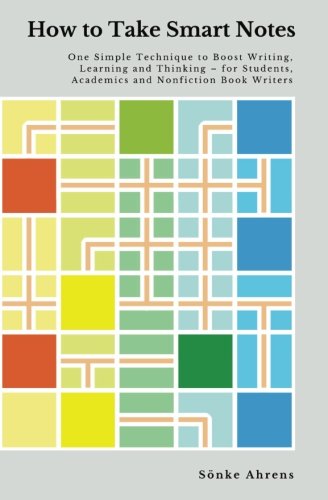
I bought this book having begun to explore the very much in vogue (and extremely nerdy) Zettelkasten note-taking methodology developed by the late Niklas Luhmann. It’s a system that relies on cross-linking large numbers of discrete personal notes, and notes summarising research sources that have provoked your interest. The general idea is, link enough notes together in the right way, and whole new avenues of ideas for new writing topics will open up before you.
Luhmann, a sociologist, relied on a manual system containing many thousands of index cards. He credited this system with enabling him to write 70 books and more than 400 articles. In more modern times, it’s an approach crying out out for computerisation—which is how I came across it. Having become bogged down researching a chapter for my latest book, I began to look around for systems that might help me organise my existing notes in a better way. I soon stumbled across the remarkable, free software named Obsidian. Having loaded my notes into (and had my mind blown by the potential of) this application, I thought I’d better learn more about the Zettelkasten system. Which led me to Sönke Ahrens‘s book.
How to Take Smart Notes is an extremely useful introduction to the Zettelkasten system. The book was longer than I needed, covering a wider range of topics, all of which were interesting, but of less immediate benefit. What I was really after was a clear explanation of the key ideas of Zettelkasten, and this book certainly delivered that. As I read it, it became very clear to me that Ahrens had practised what he was preaching: his book bore clear signs of having emerged from a series of thoughtfully considered notes drawn from a wide variety of sources.
The key message from this book is that you shouldn’t treat your writing as something that comes at the end of your research; writing itself comprises a vital part of your research. Making appropriate notes as you go along might seem like a tremendous faff, but it’s the best way to ensure you’ve got the most out of your source material, and gathered your own thoughts in sufficient depth. But the real power of the Zettelkasten system is demonstrated when the ideas you’ve captured begin to link to each other in interesting new ways, suggesting brand new writing opportunities. I’m already starting to see that happen in my own collection of notes.
How to Take Smart Notes is highly recommended to anyone who carries out any form of research with the ultimate aim of writing about it.
- Buy this book from Amazon.co.uk
- Buy this book from Amazon.com
- Unfortunately, this book is not available on the bookshop.org website.
Leave a Reply